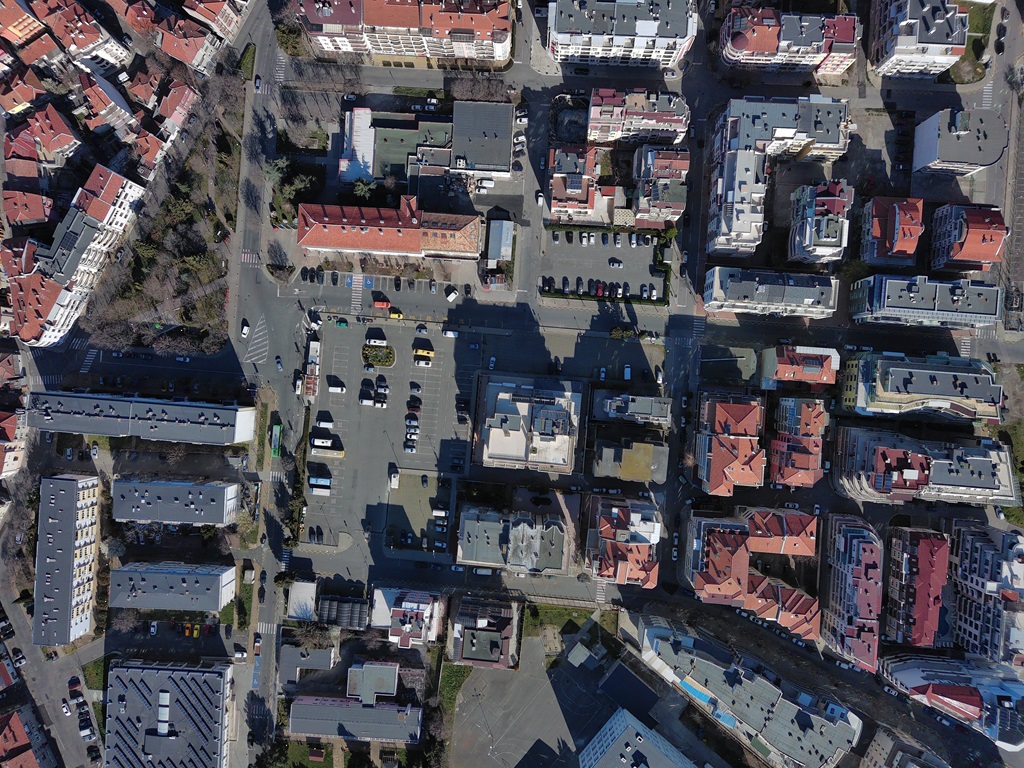Galgus is boosting wireless performance in all possible WiFi scenarios thanks to its patented Cognitive Hotspot Technology (CHT). Our Research team is focusing on developing novel indoor localisation technology, which together with the benefits of CHT will make your WiFi network perform better than ever, even in the most demanding situations.
Indoor positioning based on Signal Strength
Most of indoor positioning systems developed during last decade make use of the RSSI, as it is a reception parameter easily accessible from the manufacturer’s driver. This quantity measures signal power in dBm (decibels with respect to 1 mW), and goes typically from -50 dBm (near the transmitter) to -90 dBm (on the limits of the coverage area). The noise floor in a standard indoor environment is around -100 dBm. However, to estimate the distance from an analytical propagation model, we need to compute the path loss due to the separation between the transmitter (STA) and receiver (AP). Fortunately, the transmission power of management beacons (like Probe Requestsframes of STAs sounding for available APs) is usually known or may be guessed easily.

Once we have determined the propagation loss, the distance may be inferred from a logarithmic decay rule, that depends on the wavelength of the transmitted signal. There have been proposed some improvements to stabilise the distance estimation in noisy or multipath environments, but most of the indoor location algorithms solve the position by running an iterative trilateration algorithm.
However, the main problem of indoor propagation is multipath. Multipath refers to the behaviour of an electromagnetic wave reflecting and refracting on the walls, people, and objects that it finds. As a result, at the receiver antenna, one has multiple copies of the transmitted signal, with slightly different delays and attenuation. WiFi receivers are not prepared to equalise the incoming signal, so as long as this multipath is not very aggressive, it is usually assumed as a reduction on network performance which cannot be avoided.
In practice, multipath affects the SNIR at the receiver, and thus, the RSSI. This effect of random variation of the received power is also known as frequency-selective fading (or fast fading) because the channel transfer function remains no longer flat in the frequency domain. Due to this undesirable feature, real-world indoor location methods based upon signal strength attains a spatial resolution of 5-7 m, which may be negligible for some applications like robotics or logistics.
Indoor positioning based on Time of Flight
The Time of Flight of a radio signal measures the signal propagation time from transmitter to the receiver, to obtain the distance between the two devices. The electromagnetic waves propagate with the speed of light, which means that for the distance between stations to be accurately calculated, very accurate timers are required (in the order of nanoseconds). As in 802.11 standards the transmitter does not have a common clock with the receiver, one only may be able to measure the Round-Trip Time (RTT), which is the elapsed time between the moment where the last bit of a data block is transmitted, and the associated response (usually an ACK) is received.

As the reader shall have noticed, the ToF is not half of the value of the RTT. Indeed, there is an inherent frame processing time that biases the estimated distance. And if that was not enough, this bias is hardware-dependent and cannot be requested to the client station. In addition, when multipath is present, the time values become random variables and one needs to apply statistical inference and processing to make a robust guess on its value. However, ToF is insensitive to walls and objects. For these reasons, time-based indoor location systems may resolve position with an error of 3-5 m.
Indoor positioning based on Difference Time of Arrival
In this case, we are not concerned about propagation time between transmitter and receiver, or ToF. Conversely, we pay attention to the difference of arrival times between two receivers (APs) which are listening to the same frame from the STA. By drawing two hyperbolas between (at least) 3 APs, one can resolve the position of the STA at the interception point. The precision is fairly good, given the simplicity of this method. The expected resolution is within 1-3m for indoor deployments. The problem of frame processing time, seen in ToF-based methods, disappears due to the subtraction of this processing time on the DToA equations.

However, APs need to know a common clock base, that may be shared via control and management frames. This philosophy fits with the distributed Galgus CHT paradigm, where network nodes share periodic information to optimise their parameters. In any case, time-based methods like ToF or DToA stand on precise time measures (in the order of nanoseconds), and this may be a drawback of this promising idea.
Indoor positioning based on Channel State Information
In the last years, there has been a revolution of the available information which can be gathered from wireless drivers in commercial chips. Specifically, wireless engineers are deeply interested in the CSI matrix, which represents the fine-grain quality of the radio channel for each subcarrier frequency of the OFDM signal. This data is given for each receiver antenna in an AP with MIMO (802.11n and beyond). This valuable information shall be used to detect the Angle of Arrival (AoA) of various signal paths in a reflexive indoor environment. After that, signal processing techniques may be applied to isolate the fastest path, in Line of Sight (LoS) conditions, so as to estimate where does the main energy lobe come from. This promising technique attains sub-metric resolutions in direct vision conditions, and within 2m in No-Line of Sight (NLoS) conditions, so it is considered the most advanced approach to the indoor positioning problem using WiFi.

However, the signal processing methods involved (beamforming, singular value decomposition, inverse problems, array processing techniques, …) are notably expensive in terms of computation resources. Due to that, at this moment the proposed solutions are computed in external specific hardware like DSPs (Digital Signal Processors). The WiFi chip itself has no sufficient computation power to estimate the AoAs and thus solve the positioning problem in real time. In addition, in the state-of-the-art prototypes are only able to locate, at most, only one STA in a complex indoor environment.
Conclusions
Galgus manufactures smart WiFi solutions. We develop technology that enables performance improvement of high-density 802.11 networks, reducing the noise level in the environment, and promoting a more efficient and responsible use of resources.
With its recognised CHT (Cognitive HotspotTM Technology), Galgus provides to various vertical markets a round solution that solves the main challenges that WiFi networks are facing nowadays. Among the main benefits of our patented technology, we shall highlight that CHT increases network capacity, reduces interference, prevents congestion and slow data rates, reduces EMIs (Electro-Magnetic Interference) to critical systems, and enables automatic configuration / automatic failure detection / recovery.
In this article, we have analysed the potential of indoor localisation methods in wireless communications scenarios. As we have seen, none of the aforementioned solutions shown here is free from drawbacks. For that reason, Galgus’ Research Department is focusing on developing novel hybrid solutions to the indoor location problem, which fuse several approaches in a unified algorithm.

Galgus’ indoor localisation solution shall allow network administrators to monitor and analyse the behaviour of their clients within the network, without requesting them to install an odd app, changing their devices or bothering their movements. This may have a positive impact on network and services design, bringing benefits to both consumers and building owners.








